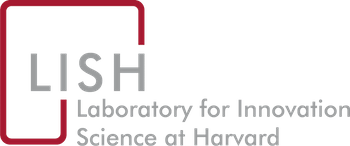Karim R. Lakhani, Katja Hutter, and Greta Friar. 2014.
Prodigy Network: Democratizing Real Estate Design and Financing. Harvard Business School Case. Harvard Business School.
Publisher's VersionAbstractThis case follows Rodrigo Nino, founder and CEO of commercial real estate development company Prodigy Network, as he develops an equity-based crowdfunding model for small investors to access commercial real estate in Colombia, then tries out the model in the U.S. U.S. regulations, starting with the Securities Act of 1933, effectively barred sponsors from soliciting small investors for large commercial real estate. However, the JOBS Act of 2013 loosened U.S. restrictions on equity crowdfunding. Nino believes that crowdfunding will democratize real estate development by providing a new asset class for small investors, revolutionizing the industry. The case also follows Nino's development of an online platform to crowdsource design for his crowdfunded buildings, maximizing shared value throughout the development process. Nino faces many challenges as he attempts to crowdfund an extended stay hotel in Manhattan, New York. For example, crowdfunded real estate faces resistance from industry leaders, especially in regards to the concern of fraud, and SEC regulations on crowdfunding remain undetermined at the time of the case.
Karim R. Lakhani, Marco Iansiti, and Kerry Herman. 2014.
Samsung Electronics: TV in an Era of Convergence. Harvard Business School Case. Harvard Business School.
Publisher's VersionAbstractFrom the late 1990s to 2006/2007, Samsung Electronics moved from one of 170 TV manufacturers to gain dominant TV market share year over year from 2007-2013. As digital technologies increasingly converged in 2013-2014, the industry faced new questions: What was the future of TV? The case considers Samsung Electronics TV Group's product development processes, as the company's mobile and TV offerings increasingly converged and consumer demands and behavior pushed the historically clear boundaries of product, content, engagement and interaction.
Karim R. Lakhani and Michael L. Tushman. 2014.
Victors & Spoils: 'Born Open'. Harvard Business School Multimedia/Video Case. Harvard Business School.
Publisher's VersionAbstractVictors & Spoils (V&S), located in Boulder, Colorado, was the first advertising agency built on open innovation and crowdsourcing principles from the ground-up. V&S was co-founded in 2009 by John Winsor, Claudia Batten and Evan Fry, all former members of the advertising agency Crispin Porter + Bogusky (CP+B). V&S crowdsourced creative ideas for its ad campaigns through Agency Machine, its proprietary online platform. CEO John Winsor wanted to change the way that advertising was done, a difficult task in an industry entrenched in traditional models. The case follows Winsor as he prepares to scale his business and must determine the best way to do so. He has an offer from Havas, a leading global advertising company interested in acquiring V&S, which would give V&S access to unprecedented resources. However, Winsor and the V&S team have concerns about how their innovative processes may be affected by partnering with a large, traditional company.
Karim Lakhani and Greta Friar. 2014.
Victors & Spoils: 'Born Open'. Harvard Business School Teaching Plan. Harvard Business School.
Publisher's VersionAbstractThis teaching plan provides an 80 minute class plan for the case Victors & Spoils: "Born Open".
Victors & Spoils (V&S), located in Boulder, Colorado, was the first advertising agency built on open innovation and crowdsourcing principles from the ground-up. V&S was co-founded in 2009 by John Winsor, Claudia Batten and Evan Fry, all former members of the advertising agency Crispin Porter + Bogusky (CP+B). V&S crowdsourced creative ideas for its ad campaigns through Agency Machine, its proprietary online platform. CEO John Winsor wanted to change the way that advertising was done, a difficult task in an industry entrenched in traditional models. The case follows Winsor as he prepares to scale his business and must determine the best way to do so. He has an offer from Havas, a leading global advertising company interested in acquiring V&S, which would give V&S access to unprecedented resources. However, Winsor and the V&S team have concerns about how their innovative processes may be affected by partnering with a large, traditional company.
